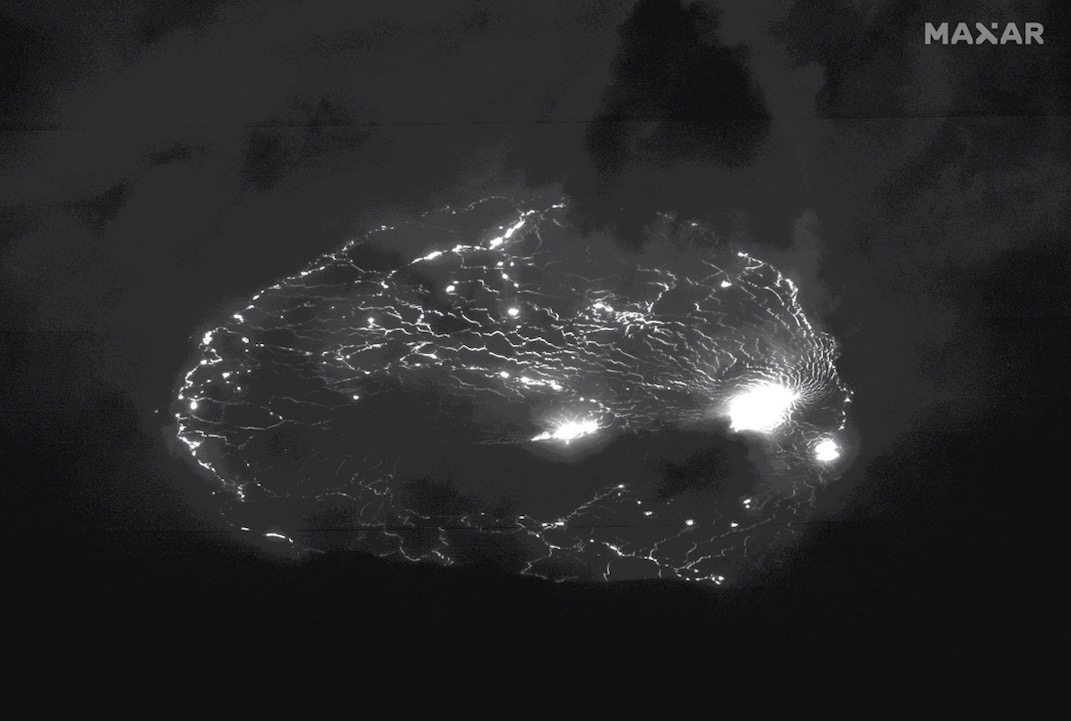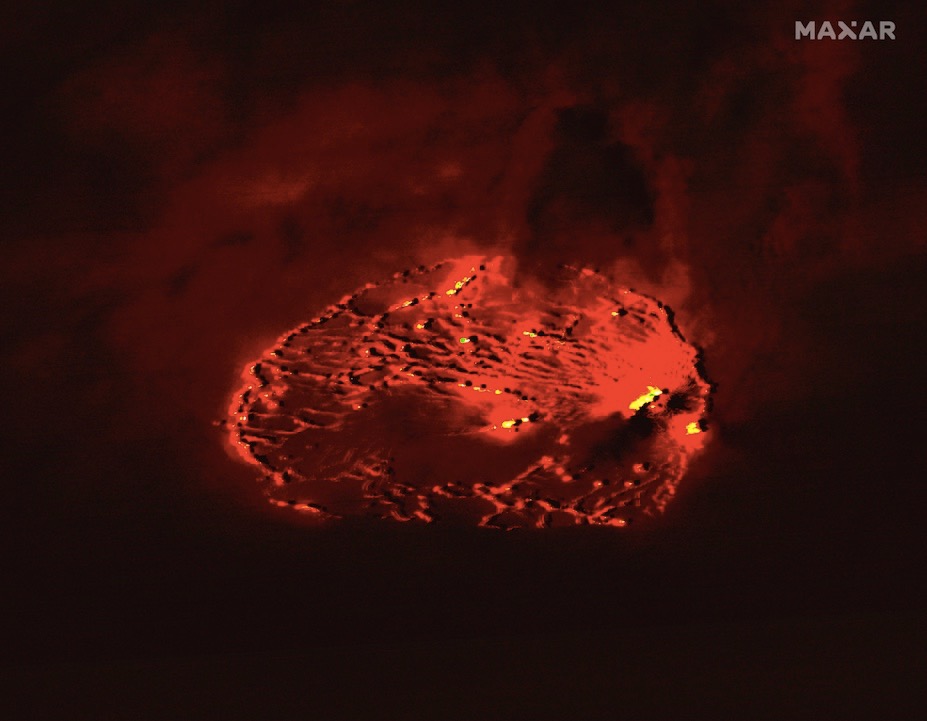Hawaiian volcanic eruption glows in gorgeous satellite photos
There's an eerie beauty to lava at night.

Incredible images from space show a Hawaiian volcanic eruption glowing in the dark.
Maxar Technologies' WorldView-3 and WorldView-2 satellites captured gorgeous night-time imagery of lava spewing from Hawaii's Kīlauea volcano on Sept. 30 and Oct. 1, respectively. The photos, two of which the company shared on Twitter Oct. 1, show an eerie glow emanating from the volcano.
"Lava continues to erupt from two vents; one along the floor and one in the western wall of Halema'uma'u crater," the United States Geological Survey (USGS) stated in a daily update of the eruption on Wednesday (Oct. 6). "All lava activity is confined within Halema'uma'u crater in Hawaii Volcanoes National Park. Seismicity and volcanic gas emission rates remain elevated."
Related: 10 incredible volcanoes in our solar system (images)

Kīlauea has been erupting since Sept. 29. The USGS continues to monitor the volcano for "high levels of volcanic gas," such as water vapor, carbon dioxide and sulfur dioxide. As these gases hit the atmosphere, they can create a visible haze known as vog (volcanic smog), a potential human health hazard as well as a threat to livestock and crops.
In addition, skin- and eye-irritating volcanic glass fragments may be carried downwind a few hundred feet or even farther, depending on the prevailing winds, according to the USGS. The caldera rim itself has been closed to the public since early 2008, the agency added.
Kīlauea, a shield volcano with gentle slopes made up of thin lava, erupts periodically but had been quiescent for about a year until the current outburst. Authorities have been monitoring the eruption, and from its beginning there has been no immediate threat to populated areas, a Sept. 30 Reuters report stated.
Breaking space news, the latest updates on rocket launches, skywatching events and more!

WorldView-2 and Worldview-3 have been operating in low Earth orbit since 2009 and 2014, respectively. WorldView-2 zooms around our planet at an altitude of 480 miles (772 kilometers), while WorldView-3 operates 383 miles (617 km) up. For comparison, the International Space Station flies at an average altitude of about 250 miles (400 km).
Both satellites' orbits are sun-synchronous, meaning that the sun is always in the same position relative to the spacecraft for image lighting consistency.
The two satellites capture imagery in panchromatic and multispectral bands, revisiting the same area above Earth about once a day. WorldView-2 provides a maximum resolution of about 1.5 feet (46 centimeters) in panchromatic bands and 6 feet (1.85 meters) in multispectral bands. For WorldView-3, those numbers are about 1 foot (31 cm) and 4 feet (1.24 m), respectively. WorldView-3 also features a resolution of about 12 feet (3.7 m) in short-wave infrared, according to a Maxar datasheet.
Follow Elizabeth Howell on Twitter @howellspace. Follow us on Twitter @Spacedotcom and on Facebook.

Elizabeth Howell (she/her), Ph.D., was a staff writer in the spaceflight channel between 2022 and 2024 specializing in Canadian space news. She was contributing writer for Space.com for 10 years from 2012 to 2024. Elizabeth's reporting includes multiple exclusives with the White House, leading world coverage about a lost-and-found space tomato on the International Space Station, witnessing five human spaceflight launches on two continents, flying parabolic, working inside a spacesuit, and participating in a simulated Mars mission. Her latest book, "Why Am I Taller?" (ECW Press, 2022) is co-written with astronaut Dave Williams.
